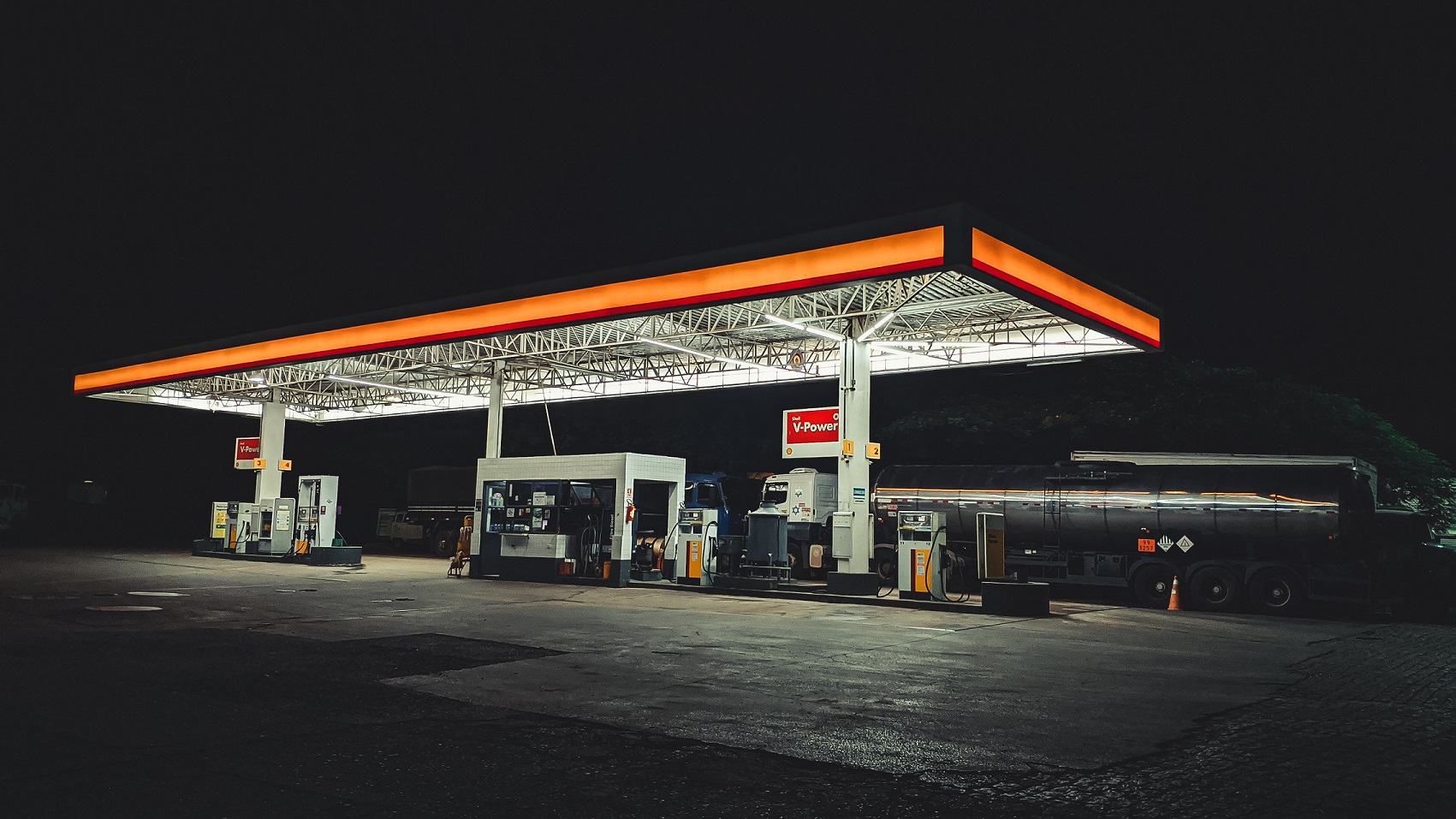
Hackathon Season 2
Second Smart Port Hackathon organised by Nantes - Saint Nazaire came to an end and took up 5 proposed challenges.
Ports have been vital gateways for prosperity and engines for growth over centuries. While they constitute an important economic asset for their regions, they can also have significant negative environmental impacts.
Inefficient road traffic in port areas causing CO2 emissions has been much overlooked in the past It involves a complex network of different stakeholders engaged in various kinds of daily port activities, in particular in the course of transporting goods, operational and clearance procedures – all powered by CO2 intensive fuels.
Optimizing road traffic in port areas and developing strategies for smooth and efficient transport flows has been a crucial challenge for policy makers in order to reduce CO2 emissions. However, in most European regions, structural funds programs or other relevant policy instruments, have neglected to address this problem in the past.
The SMOOTH PORTS project sets out to change that.
€1,139,601.00
Low-carbon economy
By engaging stakeholders from administration, port related business’ and logistic business’ along the supply chain, SMOOTH PORTS’ aims to reduce CO2 emissions from port-related road traffic by improving regional policy instruments in a holistic manner.
To achieve these aims, SMOOTH PORTS wants to utilise the differences of the project partners’ ports through an exchange of effective tools and best practices. A key focus lies on finding optimal procedures for the clearance of the goods that are so vital for society and commerce – making their processing speedy and avoiding unnecessary burdens on environment and people. A further focus will be on the different approaches regarding Information and Communications Technology solutions for various traffic related port activities as well as on the question what alternative fuels can power port activities in the future.
Based on this, a comparison of the strengths and weaknesses of the respective policy instruments will help to improve the local policy instruments of the partners. This close and joint effort between the different authorities, public institutions and ports will produce a beneficial synergy from which all stakeholders benefit.
Operational ERDF Programme 2014-2020 of the Free and Hanseatic City of Hamburg (hereafter: PI (policy instrument))
The PI provides a valuable opportunity to support measures aimed at reducing CO2 emissions in enterprises. Principally, this also includes measures in the port of Hamburg.
However, from the perspective of SMOOTH PORTS, the PI yet leaves room for improvement. Given that CO2 emissions are caused by various and diverse reasons of road traffic in ports, inter alia:
A more holistic approach is needed to reduce CO2 emissions caused by road traffic in port areas, encompassing different kind of suitable measures for the sectors active in the Port of Hamburg.
The Interreg Italy-France Maritime (hereafter: IT-FR MARITTIMO) is the territorial cooperation programme in charge of integrating the Italian-French coastal regions, notably Corsica, the French departments of Var and Alpes-Maritimes as well as Liguria, Tuscan coastal areas and Sardinia.
The program addresses the priorities of
The transport network of the area in particular relies much on the ports, since most of the trade and passengers’ flows are routed/shipped through the ports. Seaports therefore represent the main access gates to peripheral regions of Sardinia and Corsica along with minor islands and are pivotal for freight- and passenger mobility in this area.
The program has targeted the efficiency and competitiveness of ports and logistics chains, with the specific objective “Development of multimodal transport systems for improving the connection of secondary and tertiary nodes within the cooperation area to the Trans-European Transport Network (TEN-T)”. Projects have insofar aimed at analysing and testing new technological (IT) solutions to improve the smoothness of port operations. However, the whole logistics and port operations deserve a more specific focus. Including the impact of procedures, from an administrative- and control perspective, and on the efficiency of ports.
Hence, it is advisable that the experience made at EU-level for processing cargo and passengers is brought to IT-FR MARITTIMO programme and shared with the on-going projects. This experience could also be useful in the light of the next programming period 2021-2027, with the operational programme to be finalised and new calls for projects to be published.
The current regional ERDF/ESF Operational Programme 2014-2020 (ROP), which aims at strengthening economic development and cohesion on the regional territory, puts a strong emphasis on the reduction of environmental impacts.
Investment priority 4-e supports low carbon strategies for all types of territories, in particular for urban areas.
It aims to deliver a holistic approach within a defined area to reduce greenhouse gas emissions across a range of thematic areas to create an integrated approach to reducing emissions. While in some instances the implementation of individual low carbon activities can bring significant greenhouse gas reductions, an integrated approach which combines several connected measures within an area is likely to generate greater impacts in the short and long term, and maximise the value of investments.
The design of the policy instrument focused on very specific projects which did not leave enough room for other players/infrastructures.
In line with the economic development objectives, the minimisation of the impact on the environment has to be addressed by all actors; therefore the target could perhaps be reconsidered.
The Port of the City of Monfalcone is located at the most northern point of the Mediterranean and one of the largest shipyards in Europe, Fincantieri shipyard, is located here. Monfalcone furthermore is one of the most important rail-, road and airport logistics hubs in the Friuli Venezia Giulia region. Recently the port of Monfalcone has also become part of the Port Network Authority of the Eastern Adriatic Sea, together with the Port of Trieste. The sister ports are projected to grow due to the wide availability of connectivity to the hinterland and the recently introduced new Master Plan for development.
With the projected growth, there is an increase traffic and potential congestion. Therefore, the objective of the City of Monfalcone in SMOOTH PORTS is to identify long-term solutions to relieve the urban area of traffic congestion and reduce pollution factors linked to the traffic flows and generated through Port and activities and the logistics infrastructure in the port area.
The Urban area traffic plan “P.T.A.U” (Masterplan of Urban Traffic of the City of Monfalcone) is a specific policy instrument related to the territorial context, in the responsibility of the Municipality of Monfalcone, which aims to improve accessibility of the territory. Therefore, the projected growth will have an impact on this Policy Instrument. The Municipality of Monfalcone set the first example in the Region for adopting the Urban Area Traffic Plan P.T.A.U. in 2011 as an over-municipal planning tool to regulate and improve the accessibility of the territory in a larger extra-municipal vision.
P.T.A.U. contains innovative development planning in line with the new EU directives and 2020 Strategy. It is a fundamental instrument for the liveability, urban sustainability, environmental protection and health considerations in the urban area of Monfalcone. The actions are the municipalities answers to the new Directives of the EU on the Green Deal and the related reductions of CO2. The Master Plan has become even more relevant with the Port of Monfalcone, together with its sister Port – the Port of Trieste, joining the Port Network Authority of the Eastern Adriatic Sea and considering the expected investments foreseen in the new Harbour Master Plan.
Action:
problem solving related to the traffics of main road arteries and transport infrastructures to create rehabilitation and new accessibility of the territory and to improve the air quality and the urban environment.
The analysis of CO2 emissions in the Port of Monfalcone, as part of the joint study in SMOOTH PORTS, and on expected traffic development, will support the decision-making process for the Policy Instrument, since its aim is to resolve the traffic problem of main roads, whilst ensuring adequate accessibility of the territory.
Intervention:
The interventions are planned for the port area to encourage the use of transport modes powered by alternative fuels. Furthermore, the intervention foresees adjustments to the Policy Instrument to take intermodality into account (especially rail- and naval transport). Utilising intermodality is a more sustainable way to change traffic flows, especially for the truck traffic along urban axes. It is a very important aspect, which also leads to the consideration of adopting a new Port-Town Planning Plan as part of the Policy Instrument, which is necessary due to increasing traffic in the Port of Monfalcone.
An example for a problem being solved concerns the transport of ferrous materials unloaded at the port and directed to the iron and steel industries. Through the introduction of intermodal solutions, Monfalcone was able to already reduce the number of trucks crossing the City of Monfalcone by more than 2,000 trucks.
Overall objective (OO) of OPTTI 2014-2020-Developing a sustainable transport system. TO 4 (Supporting the shifts towards a low-carbon economy in all sectors) and TO 7 (Promoting sustainable transport and removing sections with insufficient capacity) with their achievements will contribute to the desired sustainable mobility of people and goods. 3rd National Action Plan on Climate Change focuses on reduction of transport emissions and fuel consumption, diversification of transport, informing and training consumers.
7 specific objectives have been identified as part of OO, including Improved transport management through introduction of innovative systems.
Improvement of PI is needed because

Second Smart Port Hackathon organised by Nantes - Saint Nazaire came to an end and took up 5 proposed challenges.

Smooth Ports partners presenting final results, hosting a forum on sustainable port development & traffic management in European Ports and host partner meeting.

European Commission approves ERDF Operational Programme 2021-2027
From 5 to 8 April, the Transport & Logistics Innovation Week (SITL) took place in Paris Nord Villepinte. This annual event, created in 1983, is the key even...

Smooth Ports article in the new European Energy Innovation magazine Spring 2022

The Municipality of Monfalcone came together with its stakeholders virtually to discuss the implementation of the Action Plan.

Smooth Ports partners come together to discuss Action Plans and implementation and monitoring phase as phase one of the project comes to an end.

Project Partners came together for a physical partner meeting first time in 18 months

Inauguration of the Good Practice example NGV Station in Montoir de Bretagne on September 22nd during the European Week of Sustainable Development.

Project partners and stakeholders came together on June 16th and June 17th for virtual visits of the ports of Nantes Saint-Nazaire and Varna